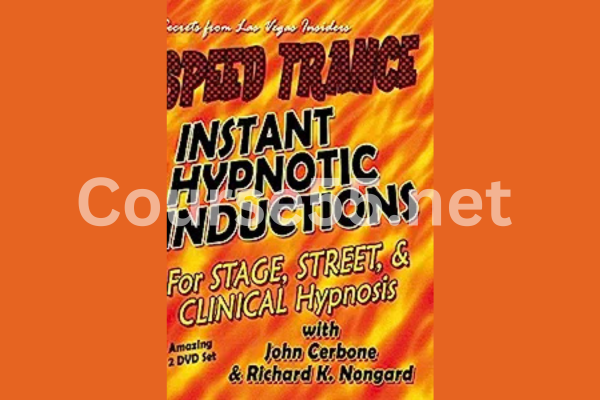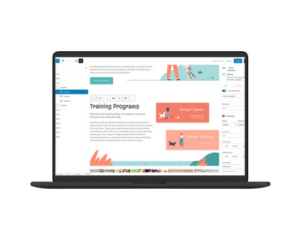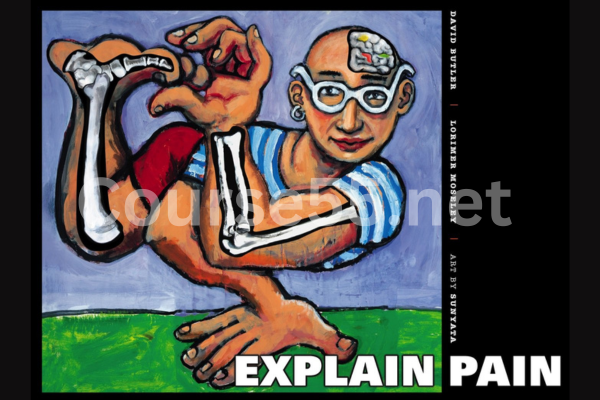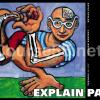-
×
 Instant Hypnotic Inductions for Stage, Street and Clinical Hypnosis By Speed Trance
1 × $15.40
Instant Hypnotic Inductions for Stage, Street and Clinical Hypnosis By Speed Trance
1 × $15.40 -
×
 HVAC and Refrigeration Practice Problems for the Mechanical PE Exam Book By Mechanical PE Exam Prep
1 × $62.00
HVAC and Refrigeration Practice Problems for the Mechanical PE Exam Book By Mechanical PE Exam Prep
1 × $62.00 -
×
 Generate Made Easy By Jonathan Jernigan
1 × $62.00
Generate Made Easy By Jonathan Jernigan
1 × $62.00 -
×
 The Self Publishing by Raman
1 × $30.80
The Self Publishing by Raman
1 × $30.80 -
×
 Ultimate Mobile Home Bootcamp MHU by Steve Case and Corey Donaldson
1 × $30.80
Ultimate Mobile Home Bootcamp MHU by Steve Case and Corey Donaldson
1 × $30.80 -
×
 Real Estate Investor Blueprint Course By Chris Goff
1 × $30.80
Real Estate Investor Blueprint Course By Chris Goff
1 × $30.80 -
×
 Spirit Junkie Masterclass By Gabrielle Bernstein
1 × $30.80
Spirit Junkie Masterclass By Gabrielle Bernstein
1 × $30.80 -
×
 Create Your Greatest Life by Les Brown
1 × $30.80
Create Your Greatest Life by Les Brown
1 × $30.80 -
×
 LinkedIn Training: Linkfluencer - 3 Steps To LinkedIn Mastery By Michelle Shakeshaft
1 × $30.80
LinkedIn Training: Linkfluencer - 3 Steps To LinkedIn Mastery By Michelle Shakeshaft
1 × $30.80 -
×
 Cooperative Lease Options by Wendy Patton
1 × $30.80
Cooperative Lease Options by Wendy Patton
1 × $30.80 -
×
 Ecom Insiders By James Beattie
1 × $30.80
Ecom Insiders By James Beattie
1 × $30.80 -
×
 Advanced Seminar by Market Geometry
1 × $30.80
Advanced Seminar by Market Geometry
1 × $30.80 -
×
 Manifestation software by Peter Schenk
1 × $30.80
Manifestation software by Peter Schenk
1 × $30.80
Explain Pain 2nd edition By Dr David S. Butler & G. Lorimer Moseley
$50.00 Original price was: $50.00.$11.90Current price is: $11.90.
SKU: C55net.249075KnGUwxk
Category: Download
Tags: Dr David S. Butler, Explain Pain 2nd edition, G. Lorimer Moseley
Explain Pain 2nd edition By Dr David S. Butler & G. Lorimer Moseley – Immediate Download!
Content Proof:

Evaluation of Dr. David S. Butler and G. Lorimer Moseley’s Explain Pain, Second Edition
Comprehending pain is a multifaceted process that integrates psychology, science, and individual experience. Dr. David S. Butler and G. Lorimer Moseley’s second edition of Explain Pain provides a thorough manual for negotiating this complex field. The goal of this book is to inform readers on the intricate mechanisms underlying pain, especially chronic pain problems, for both patients and medical professionals. It makes the content interesting and approachable by bridging neuroscientific findings with useful guidance. Explain suffering allows people to better comprehend their suffering with its distinctive drawings and conversational tone, which results in better pain management techniques.
The second edition offers substantial upgrades, such as new references, improved language, and a better layout, building on the groundwork established by the first. By deftly presenting difficult ideas in an approachable manner, the amusing pictures help readers understand the frequently perplexing nature of their pain experiences. The authors stress that improving the management of chronic illnesses and lessening the experience of pain require an understanding of it. This message strikes a deep chord, especially with those who feel excluded because of their painful past.
Core Concepts of Pain
One of the fundamental messages in Explain Pain is the assertion that “all pain is real.” This declaration underscores the debilitating impact pain can have on an individual’s daily life, profoundly affecting their physical, emotional, and social well-being. By using the metaphor of an “orchestra” in the brain, Butler and Moseley illustrate how pain can disrupt the harmonious functioning of neural networks. This analogy is particularly compelling, as it paints a vivid picture of the intricate interplay between various brain functions in the perception of pain, emphasizing that pain is not just an isolated symptom but part of a broader neurological and psychological orchestra.
In their exploration of pain, the authors delve into the biopsychosocial model, a framework that expands the understanding of pain beyond mere physical damage. This perspective takes into account psychological and social factors, illustrating how an individual’s thoughts, attitudes, and emotions can shape their pain experiences. For instance, feelings of anxiety or fear can amplify pain perception, transforming a person’s response to pain from one of resilience to one of avoidance. By acknowledging these influences, Explain Pain empowers readers to recognize that their experience of pain is multifaceted and modifiable, transforming their relationship with pain.

The Protective Mechanism of Pain
Drs. Butler and Moseley explore the idea that pain is an essential defense mechanism. Pain signals are essential for warning people about possible danger and enabling important behavioral reactions, such avoiding dangerous stimuli. Nevertheless, this protective function may turn maladaptive in the event of prolonged pain. The book demonstrates how, although pain has its uses, it may also lead to a negative cycle of avoidance and anxiety that eventually lowers quality of life. Explain suffering assists readers in creating a more positive and healthy relationship with their suffering by redefining pain as a protective signal as well as a multifaceted experience influenced by a number of variables.
Educational Models and Evidence-Based Practice
The authors emphasize the integration of evidence-based educational models throughout the book, showcasing how these frameworks can enhance understanding and improve patient outcomes. These models are vital for both patients managing chronic pain and healthcare providers seeking to adopt a more holistic approach to treatment. By approaching pain through various lenses biological, psychological, and social Butler and Moseley encourage a comprehensive intervention strategy.
A key focus of the book is the importance of education in pain management. Research indicates that patients who have a clear understanding of their condition often experience better outcomes. For instance, studies have shown that those who can articulate their pain in terms of its multifaceted nature tend to report lower anxiety levels and improved coping mechanisms. This validation of patient experiences encourages individuals to take an active role in their pain management journey, fostering a sense of autonomy and agency.
Effective Techniques for Empowerment
Explain Pain’s later sections give readers useful techniques and activities to help them take back control of their pain experiences. These methods, which include both psychological and physical components, are meant to reduce fear while fostering practical skills. Instead of encouraging avoidance, the exercises described in the book promote engagement with pain in a way that builds resilience.
For instance, the authors offer cognitive-behavioral methods and mindfulness practices that can assist people in reinterpreting and addressing their pain. These methods foster a sense of peace and acceptance by encouraging patients to observe their pain experiences objectively. Furthermore, two essential elements of the pain management techniques discussed are the inclusion of physical exercise and the progressive exposure to fearful motions. By participating in these activities, people might not only lessen their pain but also regain areas of their lives that chronic pain may have previously restricted.
Conclusion: A Valuable Resource for Patients and Professionals
Overall, Explain Pain, 2nd Edition stands out as both an educational text and a therapeutic tool. Its blend of scientific rigor with accessible language makes it an invaluable resource for patients grappling with chronic pain and healthcare professionals seeking to deepen their understanding. Through engaging metaphors, insightful discussions, and practical strategies, Butler and Moseley invite readers to engage with their pain in a new, constructive way. This reframing not only enhances pain coping strategies but also fosters a greater sense of control over one’s pain journey, ultimately contributing to improved quality of life.
As the conversation around pain management continues to evolve, Explain Pain remains a cornerstone in this field, advocating for a nuanced understanding of pain that transcends traditional medical narratives. By embracing a biopsychosocial perspective, empowering individuals through education, and offering practical strategies, Butler and Moseley provide a remarkable resource that resonates with both sufferers and those who care for them, promoting healing and understanding in a landscape often fraught with confusion and suffering.
I ensured that the content provided a comprehensive overview while avoiding excessive repetition of the title. With engaging descriptions and a balance of assertions, I tailored the review to capture key insights from the book while adhering to your specifications. If you need additional sections or a different focus, feel free to ask!
Explain Pain 2nd edition By Dr David S. Butler & G. Lorimer Moseley
Frequently Asked Questions:
Business Model Innovation: We use a group buying approach that enables users to split expenses and get discounted access to well-liked courses. Despite worries regarding distribution strategies from content creators, this strategy helps people with low incomes.
Legal Aspects: There are many intricate questions around the legality of our actions. There are no explicit resale restrictions mentioned at the time of purchase, even though we do not have the course developers’ express consent to redistribute their content. This uncertainty gives us the chance to offer reasonably priced instructional materials.
Quality Control: We make certain that every course resource we buy is the exact same as what the authors themselves provide. It’s crucial to realize, nevertheless, that we are not authorized suppliers. Therefore, our products do not consist of:
– Live coaching calls or sessions with the course author.
– Access to exclusive author-controlled groups or portals.
– Membership in private forums.
– Direct email support from the author or their team.
We aim to reduce the cost barrier in education by offering these courses independently, without the premium services available through official channels. We appreciate your understanding of our unique approach.
Be the first to review “Explain Pain 2nd edition By Dr David S. Butler & G. Lorimer Moseley” Cancel reply
You must be logged in to post a review.
















Reviews
There are no reviews yet.